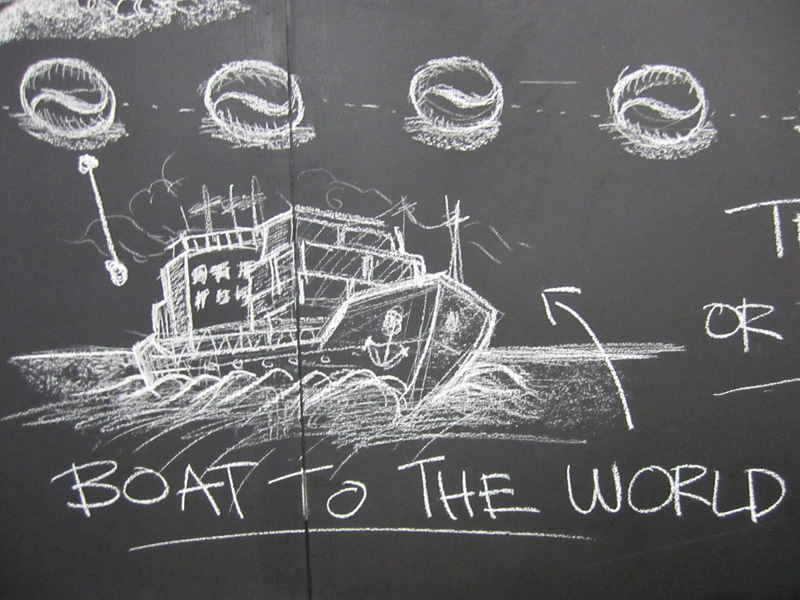No coffee grows in Manhattan, but a good chunk of the reason why coffee makes it from the source to your cup is thanks to people hard at work in the city that never sleeps.
In offices right next to gourmet coffee shops, corner bodegas and ubiquitous Starbucks, traders, analysts, exporters, certifiers, and editors are chugging away to grind the cogs of the massive international mechanism that delivers coffee to consumers in all forms, from freeze dried supermarket containers to micro-roasted organic estate espresso shots.
At the New York Mercantile Exchange at One North End Ave in the World Financial Center, traders at the Intercontinental Exchange (ICE) set the price for Arabica coffee (the “higher” quality stuff used to bolster grocery store blends and pure in all cups hoping to be gourmet). Every day, between the hours of 3:30 AM and 2 PM, traders determine the price per pound for washed Arabicas, influenced by everything from Rwandan politics to rumors of infamous Brazilian frosts. Gone are the days, however, of shouting and handwaving. “The Ice” has gone purely digital.
Also in the Financial District is Brown Brothers Harriman, the nation’s oldest (and largest) private bank. One of their main activities is commodity lending. Vice President of Commodity Lending Mark Williams says, “We’re a relatively small bank…and commodity lending is our oldest business; we’ve been doing it for about 200 years. Coffee is the single most important component of that.”
Uptown at 3rd Ave and 45th St, commodities traders negotiate futures contracts. Arabica coffee is traded in units of 37,500lbs called “C” contracts. Coffee futures are traded 3 years into the… future.
The president of the Colombian Federation of Coffee Growers (the ones responsible for all those Juan Valdez ads) lives farther up on the Upper East Side. (Juan Valdez may have fallen out of the prime time ad circuit, but he’s still alive and well. And he has a blog).
Rainforest Alliance, the most prevalent certifier in the coffee industry, has offices on Broadway and Bleecker.
Tea and Coffee trade journal had been published in Lower Manhattan since 1901, but recently moved its offices into Queens.
The tentacles of the coffee industry extend into Brooklyn as well. Stumptown, Gorilla, Blue Bottle, Dallis Bros, and Brooklyn Roasting Company all transform green beans into roasted gold in the bustling BK.
People grow coffee in over 70 countries hugging the earth’s tropical girth. The people who cultivate it speak thousands of languages and literally span the globe. Ships transporting beans traverse the planet every single day and arrive in New York’s ports with coffee from isles as remote as East Timor and Papua New Guinea.
But Manhattan is still the coffee island.
___________________________
To find out more about coffee, including the politics and economics from the plant to the cup, follow Rachel Northrop’s blog: When Coffee Speaks.
Image: Deli Coffee
Thumbnail photo: Johan Edstrom
